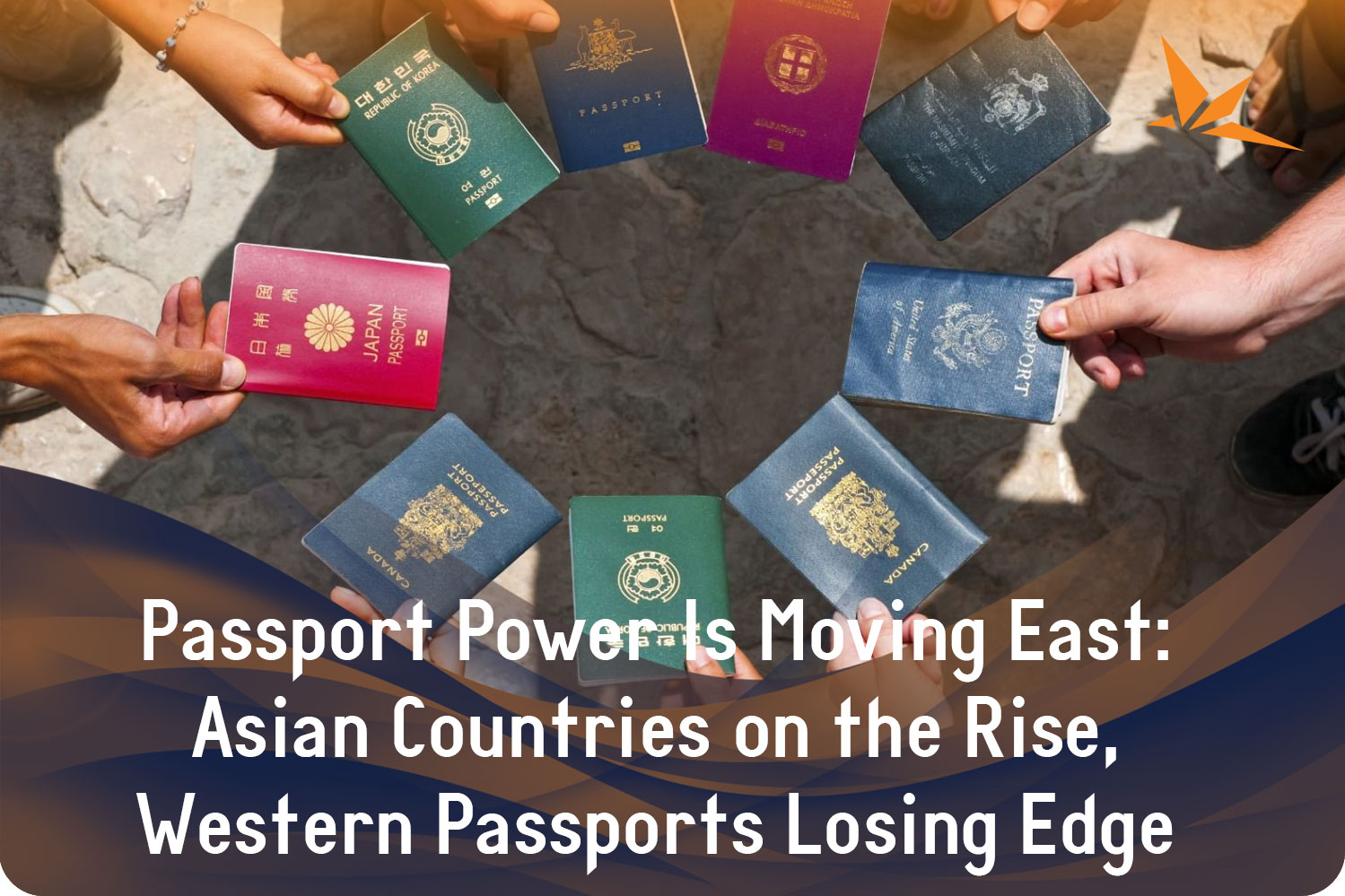
Passport Power Is Moving East: Asian Countries on the Rise, Western Passports Losing Edge
For decades, the world’s most powerful passports belonged to Western nations — a sign of privilege, diplomacy, and global reach. But that dominance is slowly fading. According to the Henley Global Mobility Report (July 2025), the balance of passport power is shifting eastward. Asian passports are climbing to the top of global rankings, while once-mighty Western ones are slipping behind.
This change highlights not just evolving visa policies, but also a deeper transformation in the world’s political and economic landscape.
What Is “Passport Power” and Why Does It Matter?
A passport’s power is measured by how many countries its holders can visit without needing a visa beforehand. The more visa-free or visa-on-arrival destinations available, the higher a country ranks on the passport index — a global ranking system led by the Henley Passport Index.
These rankings aren’t just about convenience. They reflect diplomatic relationships, international trust, and economic strength. In short, a powerful passport opens doors — literally and figuratively — for trade, tourism, and global mobility.
Asia Takes the Lead: The New Travel Titans
The Henley Global Mobility Report 2025 makes it clear: Asia now dominates the top spots.
Singapore holds the world’s most powerful passport, with visa-free access to 193 destinations.
Japan and South Korea follow closely, with 190 visa-free destinations each.
Even the United Arab Emirates (UAE) has surged to 8th place globally, offering access to 184 countries.
Meanwhile, long-standing Western leaders like the United States and United Kingdom are losing some of their edge. The U.S. passport has fallen to 10th place with access to 182 destinations — its lowest ranking in recent years — and the U.K. now allows entry to 186 countries, dropping a few spots compared to previous years.
This eastward rise is no coincidence. Asian governments have actively pursued visa-waiver agreements, invested in diplomatic relations, and leveraged their growing economic and geopolitical influence to expand mobility for their citizens.
Western countries, on the other hand, seem to be slowing down. Tightened border controls, post-pandemic visa policies, and reduced diplomatic engagement have made it harder for them to keep up.
Why Western Passports Are Losing Ground
It’s not that Western passports have suddenly become weak — they still offer vast travel freedom. But others are catching up fast. Several factors explain this shift:
- Stricter immigration policies: Western nations are tightening entry rules due to migration and security concerns. This makes it harder to negotiate reciprocal visa deals.
- Diplomatic complacency: Some countries rely on past prestige rather than actively building new visa partnerships.
- Asia’s growing influence: Emerging economies in Asia and the Gulf are reshaping international relations through trade, tourism, and travel agreements.
- Regional cooperation: Groups like ASEAN and the GCC are making intra-regional travel much easier, boosting their collective passport rankings.
As a result, Asia is quickly turning into the new global mobility hub.
Pakistan Passport: Small Gains, Long Road Ahead
In this reshaped world of travel freedom, where does the Pakistan passport stand?
Pakistan’s passport remains near the bottom of the passport index, but recent reports show slight improvements. According to the latest Henley data, Pakistan ranks 100th globally, up from 113th a few years ago. While that’s still low, it shows some forward movement in the country’s global standing.
Currently, the Pakistan passport visa free countries list includes around 32 destinations — up from the mid-20s range in previous years. These destinations include:
- Qatar
- Kenya
- Maldives
- Rwanda
- Cambodia
- Seychelles
- Madagascar
- Dominica
- Micronesia
- Nepal
- and several African and Pacific island nations
Most of these are smaller, tourism-focused countries, but they mark important steps toward broader global access for Pakistani travelers.
Why Pakistan’s Passport Still Struggles
Despite some progress, Pakistan still ranks among the world’s weaker passports — often placed just above countries facing severe travel restrictions. Several factors contribute to this:
- Security perceptions: Concerns about illegal migration and regional instability make many countries hesitant to open visa-free travel to Pakistanis.
- Limited diplomatic outreach: Pakistan has historically not prioritized mobility diplomacy the way countries like the UAE or Singapore have.
- Economic and political challenges: Economic uncertainty and governance issues affect global confidence in reciprocal travel agreements.
- Regional competition: Neighbouring countries like India and Bangladesh are now outperforming Pakistan in global mobility rankings.
Still, the gradual improvement on the passport index shows that Pakistan is not standing still. Ongoing talks with Gulf, African, and Southeast Asian countries could further improve visa-free access in the coming years.
What the Eastward Shift Means for the World
The shift in passport power isn’t just about travel convenience — it reflects changing realities of global influence.
- Asia is now a mobility powerhouse: Singapore, Japan, and South Korea symbolize a new era where Eastern passports are as strong — or stronger — than Western ones.
- Regional connections matter: Intra-Asian travel has become easier thanks to strong regional partnerships, encouraging trade and tourism.
- Mobility equals diplomacy: Countries increasingly view visa policies as diplomatic tools. A strong passport now signals trust, cooperation, and openness — not just wealth.
- Pressure on weaker nations: Countries like Pakistan face growing pressure to reform border systems, strengthen international trust, and sign more reciprocal visa deals.
This new travel map shows how global power is no longer centered in the West. Economic growth, tourism, and strategic diplomacy are redrawing the boundaries of mobility.
About Pakistan Passport
If Pakistan wants to climb higher on the passport index, the path forward is clear:
- Enhance security credibility: Improve passport technology, traveler screening, and international data sharing.
- Expand diplomatic engagement: Negotiate more visa-waiver agreements, especially with tourism-friendly and Muslim-majority countries.
- Promote positive travel behavior: Encourage citizens to comply with visa and immigration laws abroad to build global confidence.
- Leverage regional alliances: Partner with ASEAN, GCC, and SAARC members to boost mutual travel access.
With consistent diplomatic effort and domestic reform, Pakistan could gradually transform its passport into one that reflects its global potential.
The New Geography of Passport Power
The Henley Global Mobility Report 2025 captures a turning point: passport power is moving east. Asian nations like Singapore, Japan, South Korea, and the UAE are rewriting the rules of global mobility. The West still holds many advantages, but the exclusivity it once enjoyed is fading.
For countries like Pakistan, this shift is both a challenge and an opportunity. While the Pakistan passport remains weak, its slow progress and expanding visa-free countries list hint at a better future — one built through diplomacy, stability, and international cooperation.
In a world where borders define opportunity, mobility has become the new measure of national strength. The nations that understand this — and act on it — will shape the travel freedoms of tomorrow.
;More Travel News
-
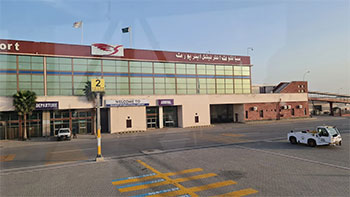 28-Aug-2025PIA Shifts Sialkot Flights to Lahore as Floodwaters Force Airport Closure
28-Aug-2025PIA Shifts Sialkot Flights to Lahore as Floodwaters Force Airport Closure -
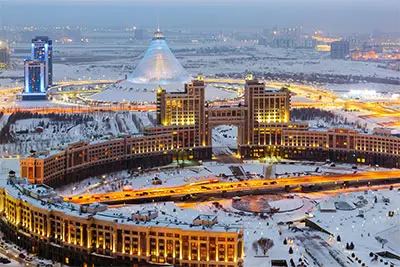 01-May-2025Kazakhstan Offers Golden Visa by Investment Program
01-May-2025Kazakhstan Offers Golden Visa by Investment Program -
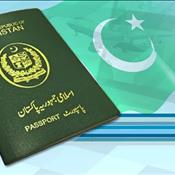 06-Jun-2023Applying for a Tourist Visa to Pakistan 2023
06-Jun-2023Applying for a Tourist Visa to Pakistan 2023 -
 25-Mar-2020VR Travel: A Novel way to Travel amid Coronavirus Consequences
25-Mar-2020VR Travel: A Novel way to Travel amid Coronavirus Consequences -
 06-Mar-2025Summer Fun for the Whole Family—Book Now!
06-Mar-2025Summer Fun for the Whole Family—Book Now! -
 03-Mar-2025Policy on Interfaith Harmony
03-Mar-2025Policy on Interfaith Harmony -
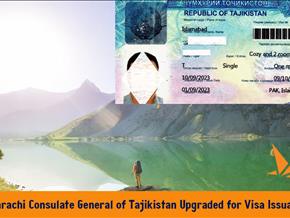 12-Jan-2025Karachi Consulate General of Tajikistan Upgraded for Visa Issuance
12-Jan-2025Karachi Consulate General of Tajikistan Upgraded for Visa Issuance -
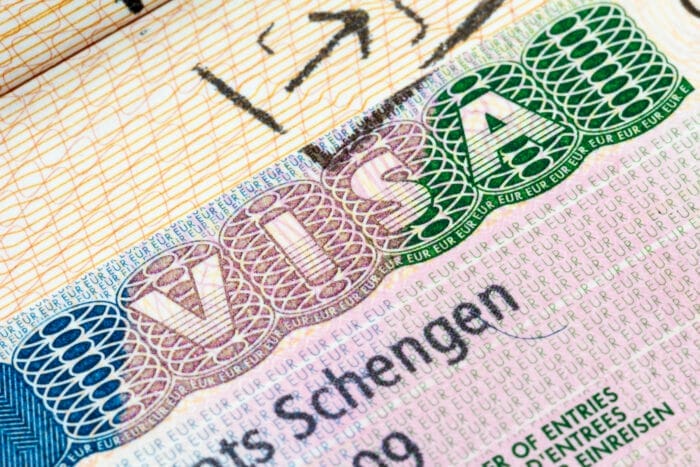 26-Aug-2025Schengen Visa Fees Breakdown: Why Some Countries Cost More and How to Calculate Your Total Cost
26-Aug-2025Schengen Visa Fees Breakdown: Why Some Countries Cost More and How to Calculate Your Total Cost -
 24-Dec-2019The Rumors against Saudi Arabia Multiple Visa Has Declared By Embassy
24-Dec-2019The Rumors against Saudi Arabia Multiple Visa Has Declared By Embassy -
 24-Nov-202530 Days Dubai Visa Price from Pakistan tourist Guide 2025-2026
24-Nov-202530 Days Dubai Visa Price from Pakistan tourist Guide 2025-2026 -
 24-Feb-2025Women Pilgrims in 2025: New Rules for Performing Hajj Without a Mahram
24-Feb-2025Women Pilgrims in 2025: New Rules for Performing Hajj Without a Mahram -
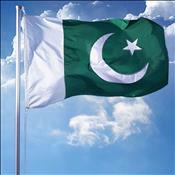 28-Apr-2020How To Get Pakistan Visa For Foreign Citizens
28-Apr-2020How To Get Pakistan Visa For Foreign Citizens
